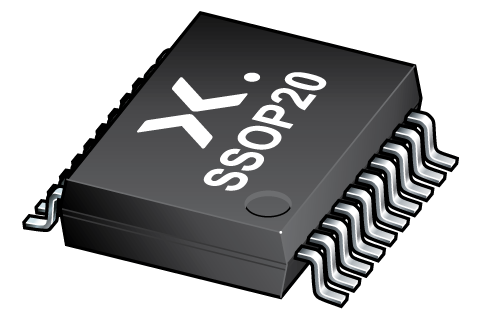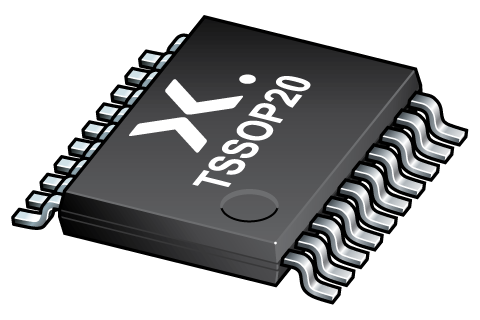
Register once, drag and drop ECAD models into your CAD tool and speed up your design.
Click here for more information74HC273DB
Octal D-type flip-flop with reset; positive-edge trigger
74HC273;74HCT273是高速硅栅CMOS器件并且与低功耗肖特基TTL(LSTTL)引脚兼容。
74HC273;74HCT273具有带单独D输入和Q输出的八个边沿触发D类触发器。通用时钟(引脚CP)和主复位(引脚MR)同时输入、加载和复位(清零)所有触发器。在时钟从低到高转换前的某个建立时间,每个D输入状态都会被传输到相应的触发器输出(Qn)。
通过MR输入上的低电压电平,所有输出都会被强制为不受时钟或数据输入影响的低电平。
该器件对于仅需要真正输出以及时钟和主复位常用于所有存储元件的应用非常有用。
Alternatives
Features and benefits
- 用于MOS微处理器或存储器的理想缓冲器
- 通用时钟和主复位
- 八个正沿触发D类触发器
- 符合JEDEC标准no. 7A
- ESD保护:
- HBM EIA/JESD22-A114-C超过2000 V
- MM EIA/JESD22-A115-A超过200 V
- 多个封装选项
- 指定温度范围为-40 °C至+85°C以及-40 °C至+125 °C
参数类型
| 型号 | Product status | Package name |
|---|---|---|
| 74HC273DB | End of life | SSOP20 |
PCB Symbol, Footprint and 3D Model
| Model Name | 描述 |
|---|---|
|
|
封装
下表中的所有产品型号已停产。参见表 停产信息 了解更多信息。
| 型号 | 可订购的器件编号,(订购码(12NC)) | 状态 | 标示 | 封装 | 外形图 | 回流焊/波峰焊 | 包装 |
|---|---|---|---|---|---|---|---|
| 74HC273DB | 74HC273DB,118 (935174730118) |
Withdrawn / End-of-life | HC273 |

SSOP20 (SOT339-1) |
SOT339-1 |
SSOP-TSSOP-VSO-WAVE
|
SOT339-1_118 |
| 74HC273DB,112 (935174730112) |
Obsolete | HC273 | Not available |
Series
文档 (7)
| 文件名称 | 标题 | 类型 | 日期 |
|---|---|---|---|
| 74HC_HCT273 | Octal D-type flip-flop with reset; positive-edge trigger | Data sheet | 2021-09-06 |
| AN11044 | Pin FMEA 74HC/74HCT family | Application note | 2019-01-09 |
| Nexperia_package_poster | Nexperia package poster | Leaflet | 2020-05-15 |
| SOT339-1 | plastic, shrink small outline package; 20 leads; 0.65 mm pitch; 7.2 mm x 5.3 mm x 2 mm body | Package information | 2020-04-21 |
| hc | HC/HCT Spice model | SPICE model | 2022-02-17 |
| HCT_USER_GUIDE | HC/T User Guide | User manual | 1997-10-31 |
| SSOP-TSSOP-VSO-WAVE | Footprint for wave soldering | Wave soldering | 2009-10-08 |
支持
如果您需要设计/技术支持,请告知我们并填写 应答表 我们会尽快回复您。
模型
| 文件名称 | 标题 | 类型 | 日期 |
|---|---|---|---|
| hc | HC/HCT Spice model | SPICE model | 2022-02-17 |
PCB Symbol, Footprint and 3D Model
| Model Name | 描述 |
|---|---|
|
|
How does it work?
The interactive datasheets are based on the Nexperia MOSFET precision electrothermal models. With our interactive datasheets you can simply specify your own conditions interactively. Start by changing the values of the conditions. You can do this by using the sliders in the condition fields. By dragging the sliders you will see how the MOSFET will perform at the new conditions set.

